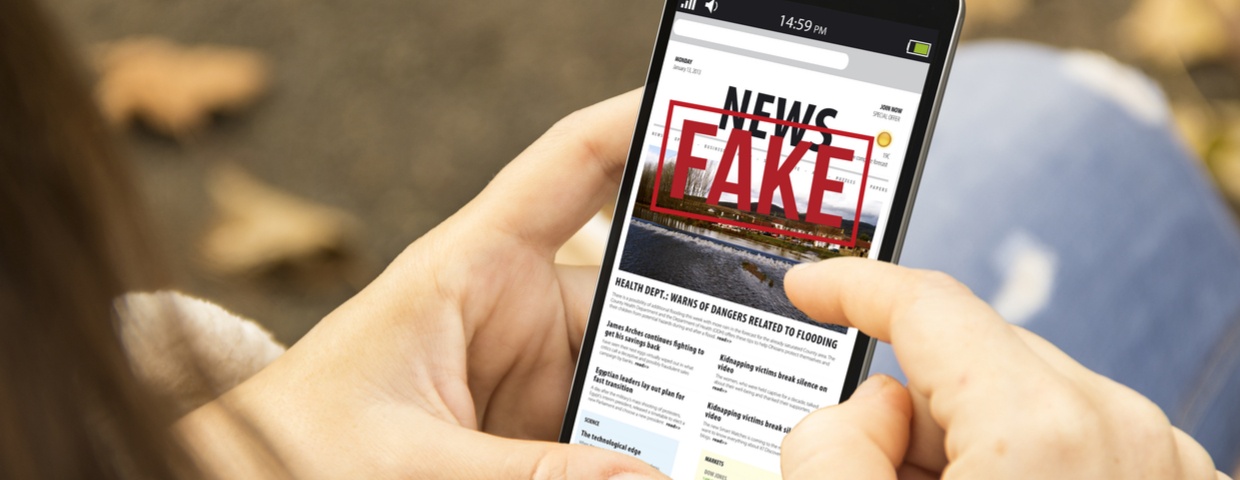How to Spot and Report Fake News on Facebook
Posted by Sarah Wai on Jan 29, 2021 6:05:00 AM

There’s been a huge upset over fake news being propagated over Facebook for some time now. Many Facebook users now know how to spot fake news, but there are still many Facebook users who are still unable to distinguish fake news from legitimate (and you may be one of them). If you are one of those who are struggling to find the distinction, don’t be embarrassed. It can be really hard to tell the difference sometimes! “Fakers” have gotten really good at passing themselves off as legitimate, which is why Facebook is still on the search for many of them. In this blog post, we’ll delve into how you can distinguish fake news from legitimate news and how you can personally help your fellow Facebook users by reporting the “Fakers.”
Types of Fake News to be Wary of
The best thing to keep in the back of your mind with ANY news- whether that’s from Facebook, news outlets, or even friends and family- is that just because it was stated as if it was legitimate does not make it so. Thanks to photoshop and half-truths, many things that are shared can have some semblance of truth without actually being factual. There are a few different types of fake news to be wary of:
False News
False news is the easiest of the types of fake news to identify. It usually comes from a website that is obviously designed to look like some sort of news outlet but lacks the credentials of a legitimate news outlet. These usually have photographs and headlines that are misleading. You typically see a lot of these pop up around elections and after something controversial has happened. They are very commonly "promoted" on Facebook.
Misleading News
These are typically the most difficult to identify because they have a grain of truth to them. Maybe the news article says something you know is true, so you immediately assume the rest of it is true, but in reality- you just got punked. These are usually the most attractive to users because they can be targeted ads or promoted posts that align with what those users have already shown interest in. Tricky, huh? The best way to identify these is to determine if the headline lines up with the text of the article and to check their sources. If they don't reference primary sources, then the chances of it being misleading news is very high.
Partisan News
This type is sneaky to the core and actually is what most news can be classified as. It is an interpretation of real news that has been manipulated in a way that fits someone’s agenda, typically politically. I learned very quickly in my undergraduate studies of media communications that MOST news is partisan. There is almost always an agenda behind an article, and many times you may have absolutely no idea what the agenda is and how it affects you- but, oh, can it affect you. I recommend checking out AllSides for balanced news and clear party associations.
Clickbait News
You know that shocking news article about Former President Obama “secretly” having an affair that First Lady Michelle Obama doesn’t know about. Oh, so tempting to click on. Or better yet, Former President Donald Trump’s lovechild with a Russian Olympic Athlete. C’mon! It’s almost believable. BUT… that’s just clickbait for you. They give you an almost believable and enticing headline, and then you click through to something that wasn’t what was promised. Ouch.
Satirical News
Sites like The Onion are the biggest culprits of this. Before it was well known to be a satirical site, I saw too many users posting the articles as if they were real. If you aren’t familiar with the nature of satire, I suggest educating yourself. There's nothing more embarrassing than resharing one of these articles under the assumption that it's real news.
Facebook and the War Against Fake News
A few years ago, Facebook released a help page called “Tips to Spot False News” after they first came under fire as being propagators of false information. I still recommend this as a helpful resource to help identify fake news, as it includes some simple tips that are easy to remember.
They’ve worked for years now as a team to reduce the spread of false news over Facebook, and have taken their fight against misinformation to the point where many are now questioning if they've gone too far.
Report the Fakers
If you know that a news story is false- report it! Just make sure not to get crazy with reporting people, especially if they're your friends and are just saying things you don't agree with or like (modern-day 'cried wolf' anyone?) Facebook has a team of people that take a look at all news stories that are reported as false and they 1) determine if they are indeed false, and 2) use that info to identify fake news better.
Here’s how to report a news story as fake news:
- Click the “…” in the top right of the post
- Click “Report Ad” or “Report Post”
- Click on “It’s a false news story”
You also have the option to mark things as “offensive,” “misleading or a scam,” “I disagree with it,” among others. This is an effort by Facebook to show you less of what you don’t like and more of what you do.
Remember, you are part of this fight against fake news. Facebook is not solely responsible for the propagation of fake news. Its users are as well. So, let’s all do our best to fight fake news and help our fellow Facebook users out!
Written by Sarah Wai
Former Content, Email, and Social Media Marketing Specialist of Tribute Media. Bachelor of Science in Digital Communication Arts and Master in Business Administration.

